-
 Bitcoin
Bitcoin $108,489.6704
1.13% -
 Ethereum
Ethereum $2,502.0528
2.92% -
 Tether USDt
Tether USDt $1.0002
0.00% -
 XRP
XRP $2.1941
0.51% -
 BNB
BNB $655.3375
1.00% -
 Solana
Solana $151.5977
1.27% -
 USDC
USDC $0.9999
0.00% -
 TRON
TRON $0.2768
0.32% -
 Dogecoin
Dogecoin $0.1676
2.86% -
 Cardano
Cardano $0.5675
0.98% -
 Hyperliquid
Hyperliquid $40.6109
7.48% -
 Bitcoin Cash
Bitcoin Cash $500.7746
2.09% -
 Sui
Sui $2.8328
2.03% -
 Chainlink
Chainlink $13.4452
1.26% -
 UNUS SED LEO
UNUS SED LEO $9.1623
0.39% -
 Avalanche
Avalanche $18.2267
2.24% -
 Stellar
Stellar $0.2382
0.00% -
 Toncoin
Toncoin $2.8885
1.68% -
 Shiba Inu
Shiba Inu $0.0...01159
0.91% -
 Litecoin
Litecoin $87.1827
0.88% -
 Hedera
Hedera $0.1511
2.90% -
 Monero
Monero $315.4992
-0.59% -
 Polkadot
Polkadot $3.4663
2.34% -
 Bitget Token
Bitget Token $4.6118
-0.65% -
 Dai
Dai $1.0000
-0.01% -
 Ethena USDe
Ethena USDe $1.0003
0.02% -
 Uniswap
Uniswap $7.2989
4.69% -
 Pepe
Pepe $0.0...01003
5.73% -
 Aave
Aave $275.5616
7.15% -
 Pi
Pi $0.5181
-2.49%
Is it a strong signal to reverse the positive line the next day after the high-level long upper shadow line?
A high-level long upper shadow candle suggests rejection at resistance, signaling potential trend reversal in crypto markets.
Jun 30, 2025 at 03:56 pm
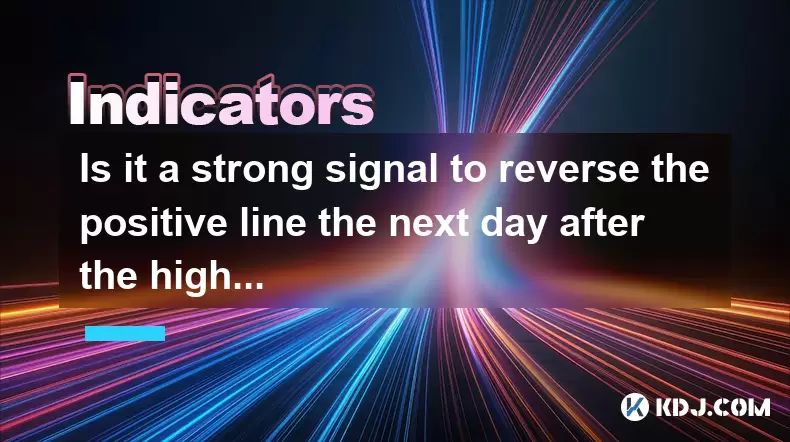
Understanding the High-Level Long Upper Shadow Line
In technical analysis, a high-level long upper shadow line refers to a candlestick pattern where the price opens at a certain level, rises significantly during the session, but then closes much lower than its high point. This results in a candle with a long upper wick or shadow, indicating that buyers pushed prices higher but were met with strong selling pressure.
This type of candle is often seen as a sign of rejection at resistance levels, especially when it appears after a prolonged uptrend. The upper shadow suggests that bulls attempted to push the price upward, but bears countered aggressively, dragging the price back down before the close. This imbalance between buying and selling pressure may hint at a potential trend reversal.
What Does It Mean When This Pattern Appears?
When this pattern occurs at a significant resistance area or after a strong rally in the cryptocurrency market, it can indicate market exhaustion. Traders interpret it as a warning that the current bullish momentum might be fading. The long upper shadow shows that despite initial strength, sellers managed to pull the price back down, suggesting growing bearish control.
It’s important to note that this pattern alone is not a definitive signal. Confirmation is usually needed through subsequent candles or other technical indicators. However, in the crypto space, where volatility is high and sentiment shifts rapidly, such patterns are closely watched by traders for possible reversals.
Is the Next Day's Candle a Reversal Signal?
The next day's candle following a high-level long upper shadow line is crucial in confirming whether a reversal is indeed taking place. If the next candle closes below the low of the shadowed candle, it could suggest that the bears have taken over. In contrast, if the price continues to rise or forms a bullish candle, the earlier shadow might just be a temporary pause rather than a reversal.
Traders often look for bearish engulfing patterns, dark cloud cover, or even hammer candles depending on context. The key is to assess volume and surrounding support/resistance zones. A drop in volume during the formation of the upper shadow candle might imply weak continuation strength, reinforcing the idea of a potential reversal.
How to Analyze This Pattern in Cryptocurrency Charts
To effectively analyze this pattern in crypto charts, follow these steps:
- Identify the long upper shadow candle: Look for a candle where the upper shadow is at least twice the length of the body.
- Check the location on the chart: Is it near a key resistance level or after a significant move up? Context matters.
- Observe the next candle: Does it close below the previous candle’s low? Is it bearish in nature?
- Analyze volume: Lower volume during the upper shadow may indicate lack of conviction among buyers.
- Use additional tools: Overlay moving averages like EMA (Exponential Moving Average) or RSI (Relative Strength Index) to confirm weakness or strength.
For example, if you're analyzing Bitcoin or Ethereum and see this pattern forming after a sharp rally, check whether RSI is above 70 — an overbought condition — which may further support the reversal idea.
Common Mistakes Traders Make With This Pattern
Many traders misinterpret the significance of a long upper shadow candle without waiting for confirmation. Some common errors include:
- Acting too early: Entering a short position immediately after seeing the shadow without waiting for the next candle can lead to losses if the price resumes upward.
- Ignoring market context: A shadowed candle in a strong uptrend may just be a consolidation phase, not necessarily a reversal.
- Neglecting volume analysis: Volume plays a critical role in validating the strength behind the candlestick pattern.
- Using it in isolation: Relying solely on candlestick patterns without incorporating other tools like support/resistance or trendlines can lead to false signals.
By avoiding these pitfalls, traders can better utilize this candlestick signal within a broader analytical framework.
Practical Example: How to Trade This Pattern in Crypto Markets
Let’s walk through a practical scenario using Ethereum (ETH/USDT) on a 4-hour chart:
- You observe a long upper shadow candle forming after a 15% rally over two days.
- The candle reaches $2,000 but closes at $1,850, leaving a large upper wick.
- The next candle opens lower and closes below $1,850, confirming weakness.
- Volume on both days shows a decline compared to previous bullish sessions.
- You decide to enter a short trade at $1,830 with a stop loss at $2,020.
- Your first profit target is set at $1,700, based on Fibonacci retracement levels.
In this case, combining the candlestick pattern with volume and Fibonacci levels increases the probability of a successful trade.
Frequently Asked Questions
Q: Can a long upper shadow candle appear in a downtrend?
A: Yes, it can. In a downtrend, a long upper shadow candle may indicate failed attempts by bulls to reverse the trend. It could signal continued bearish dominance unless followed by a strong bullish candle.
Q: What if the next candle after the shadow is indecisive, like a doji?
A: A doji following a long upper shadow candle adds to the uncertainty. It suggests hesitation in the market and may require more time or another candle to confirm the direction.
Q: Is this pattern reliable across all cryptocurrencies?
A: While applicable to most major cryptocurrencies like BTC, ETH, and BNB, its reliability depends on liquidity and trading volume. Less liquid altcoins may produce misleading signals due to erratic price action.
Q: Should I always wait for the next candle to confirm a reversal?
A: Yes, confirmation is vital. Trading purely based on one candle increases risk. Waiting for the next candle helps filter out false signals and improves trade accuracy.
Disclaimer:info@kdj.com
The information provided is not trading advice. kdj.com does not assume any responsibility for any investments made based on the information provided in this article. Cryptocurrencies are highly volatile and it is highly recommended that you invest with caution after thorough research!
If you believe that the content used on this website infringes your copyright, please contact us immediately (info@kdj.com) and we will delete it promptly.
- Bitcoin's Bumpy Ride: Profit-Taking Slows Momentum, What's Next?
- 2025-06-30 20:30:11
- Bitcoin's Price Stall: Decoding the ETF Inflows Mystery
- 2025-06-30 20:30:11
- Ripple XRP, Bitcoin, and Solaris Presale: What's the Buzz?
- 2025-06-30 18:50:11
- SpaceX, Mirror Tokens, and Investors: A Wild Ride to the Future?
- 2025-06-30 19:10:22
- Arbitrum (ARB) and Robinhood: Partnership Rumors Fuel Price Surge to $0.4289?
- 2025-06-30 19:10:22
- Jasmy Coin, Bitcoin, and the Rise of Solaris Presale: What's the Buzz?
- 2025-06-30 18:30:12
Related knowledge
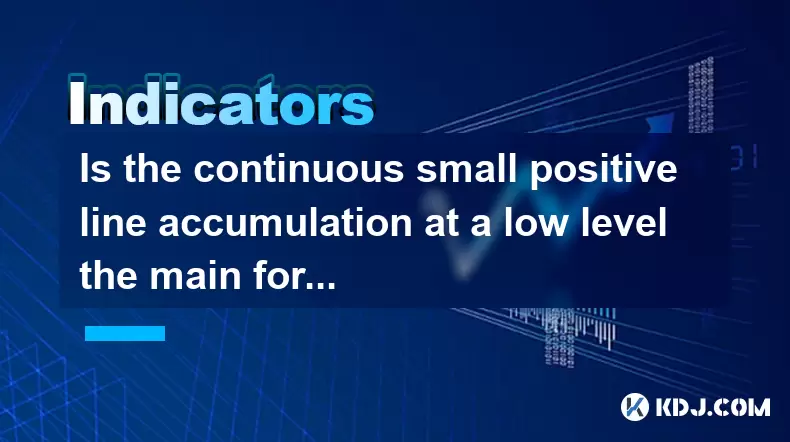
Is the continuous small positive line accumulation at a low level the main force to build a position?
Jun 30,2025 at 08:15pm
Understanding the Concept of Continuous Small Positive Line AccumulationIn cryptocurrency trading, continuous small positive line accumulation refers to a pattern where an asset experiences multiple consecutive candlesticks or bars that close higher than they open, but with relatively low volume and minimal price movement. This phenomenon is often obser...
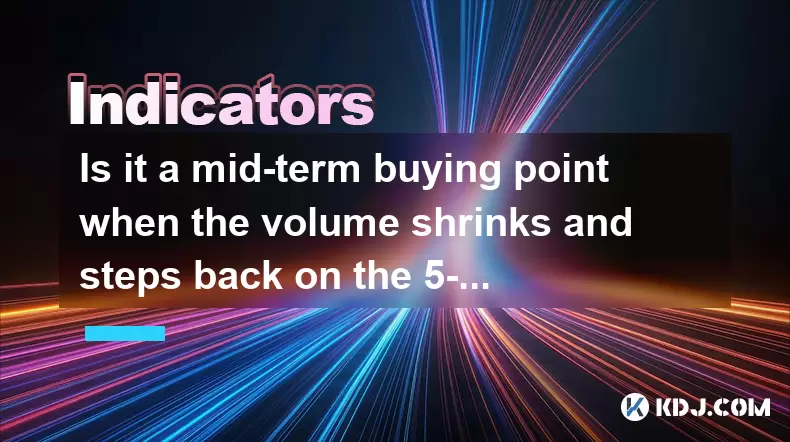
Is it a mid-term buying point when the volume shrinks and steps back on the 5-week line in the upward trend?
Jun 30,2025 at 07:49pm
Understanding the 5-Week Moving Average in Cryptocurrency TradingIn cryptocurrency trading, technical indicators such as the 5-week moving average are widely used to assess long-term trends. This indicator smooths out price volatility over a five-week period and provides traders with a clearer picture of the direction in which an asset is moving. When a...
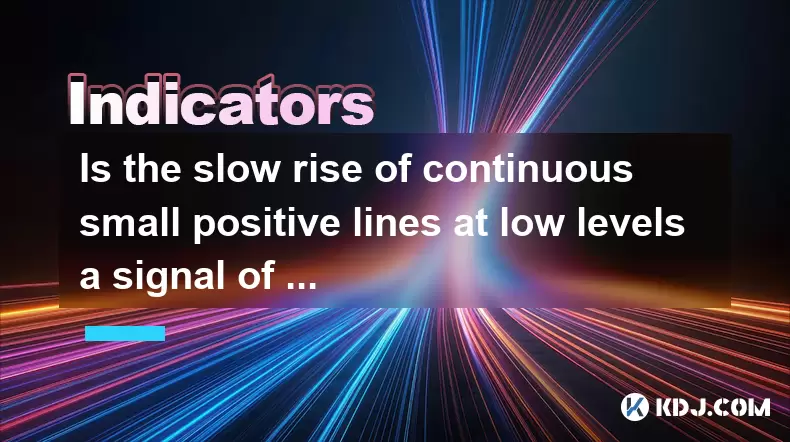
Is the slow rise of continuous small positive lines at low levels a signal of the main force absorbing funds?
Jun 30,2025 at 07:00pm
Understanding the Concept of Continuous Small Positive Lines in CryptocurrencyIn the realm of cryptocurrency trading, price patterns are often analyzed to predict future movements. One such pattern is the slow rise of continuous small positive lines at low levels, which refers to a situation where an asset’s price gradually increases over time through a...
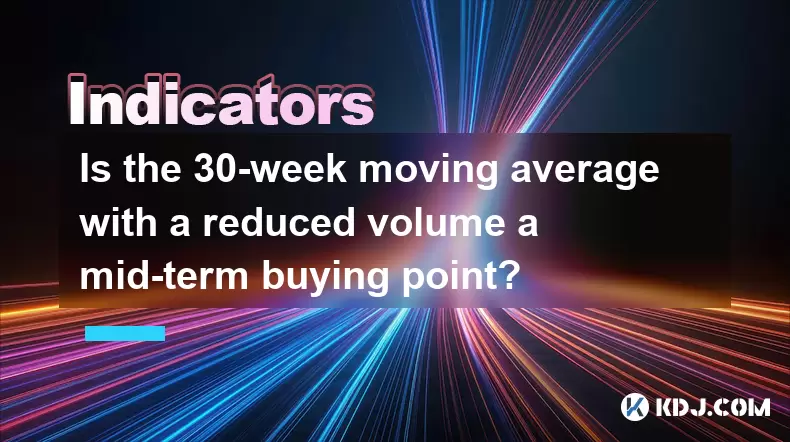
Is the 30-week moving average with a reduced volume a mid-term buying point?
Jun 30,2025 at 08:01pm
Understanding the 30-Week Moving Average in Cryptocurrency TradingThe 30-week moving average is a popular technical indicator used by traders to assess long-term trends in cryptocurrency markets. Unlike shorter timeframes such as the 50-day or 200-day moving averages, the 30-week version smooths out price data over a longer duration, reducing noise and ...
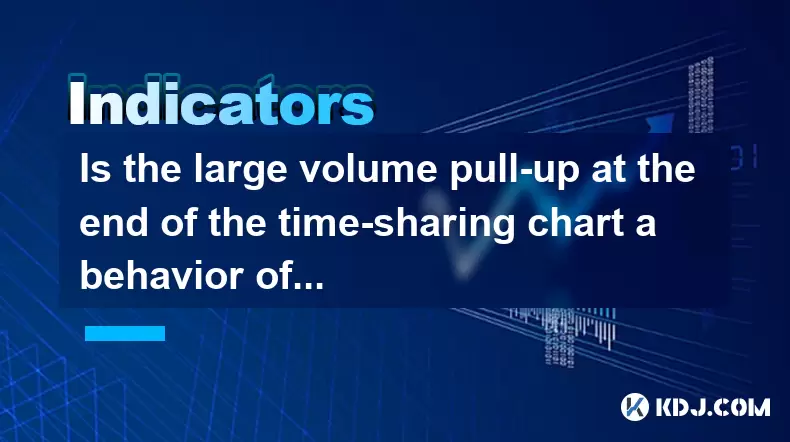
Is the large volume pull-up at the end of the time-sharing chart a behavior of inducing more?
Jun 30,2025 at 05:56pm
Understanding the Time-Sharing Chart in Cryptocurrency TradingIn the world of cryptocurrency trading, time-sharing charts are essential tools used by traders to analyze price movements within a specific timeframe. These charts typically display data in intervals such as 1-minute, 5-minute, or 15-minute segments, offering granular insights into how price...
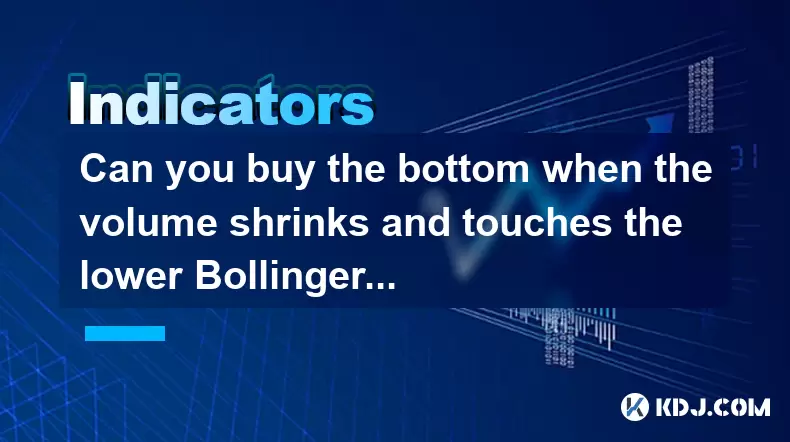
Can you buy the bottom when the volume shrinks and touches the lower Bollinger band during sideways fluctuations?
Jun 30,2025 at 08:08pm
Understanding the Bollinger Band and Volume RelationshipWhen analyzing cryptocurrency price charts, Bollinger Bands are commonly used by traders to identify potential overbought or oversold conditions. The indicator consists of a middle band (usually a 20-period moving average) and two outer bands that represent standard deviations above and below the m...

Is the continuous small positive line accumulation at a low level the main force to build a position?
Jun 30,2025 at 08:15pm
Understanding the Concept of Continuous Small Positive Line AccumulationIn cryptocurrency trading, continuous small positive line accumulation refers to a pattern where an asset experiences multiple consecutive candlesticks or bars that close higher than they open, but with relatively low volume and minimal price movement. This phenomenon is often obser...

Is it a mid-term buying point when the volume shrinks and steps back on the 5-week line in the upward trend?
Jun 30,2025 at 07:49pm
Understanding the 5-Week Moving Average in Cryptocurrency TradingIn cryptocurrency trading, technical indicators such as the 5-week moving average are widely used to assess long-term trends. This indicator smooths out price volatility over a five-week period and provides traders with a clearer picture of the direction in which an asset is moving. When a...

Is the slow rise of continuous small positive lines at low levels a signal of the main force absorbing funds?
Jun 30,2025 at 07:00pm
Understanding the Concept of Continuous Small Positive Lines in CryptocurrencyIn the realm of cryptocurrency trading, price patterns are often analyzed to predict future movements. One such pattern is the slow rise of continuous small positive lines at low levels, which refers to a situation where an asset’s price gradually increases over time through a...

Is the 30-week moving average with a reduced volume a mid-term buying point?
Jun 30,2025 at 08:01pm
Understanding the 30-Week Moving Average in Cryptocurrency TradingThe 30-week moving average is a popular technical indicator used by traders to assess long-term trends in cryptocurrency markets. Unlike shorter timeframes such as the 50-day or 200-day moving averages, the 30-week version smooths out price data over a longer duration, reducing noise and ...

Is the large volume pull-up at the end of the time-sharing chart a behavior of inducing more?
Jun 30,2025 at 05:56pm
Understanding the Time-Sharing Chart in Cryptocurrency TradingIn the world of cryptocurrency trading, time-sharing charts are essential tools used by traders to analyze price movements within a specific timeframe. These charts typically display data in intervals such as 1-minute, 5-minute, or 15-minute segments, offering granular insights into how price...

Can you buy the bottom when the volume shrinks and touches the lower Bollinger band during sideways fluctuations?
Jun 30,2025 at 08:08pm
Understanding the Bollinger Band and Volume RelationshipWhen analyzing cryptocurrency price charts, Bollinger Bands are commonly used by traders to identify potential overbought or oversold conditions. The indicator consists of a middle band (usually a 20-period moving average) and two outer bands that represent standard deviations above and below the m...
See all articles

























































































